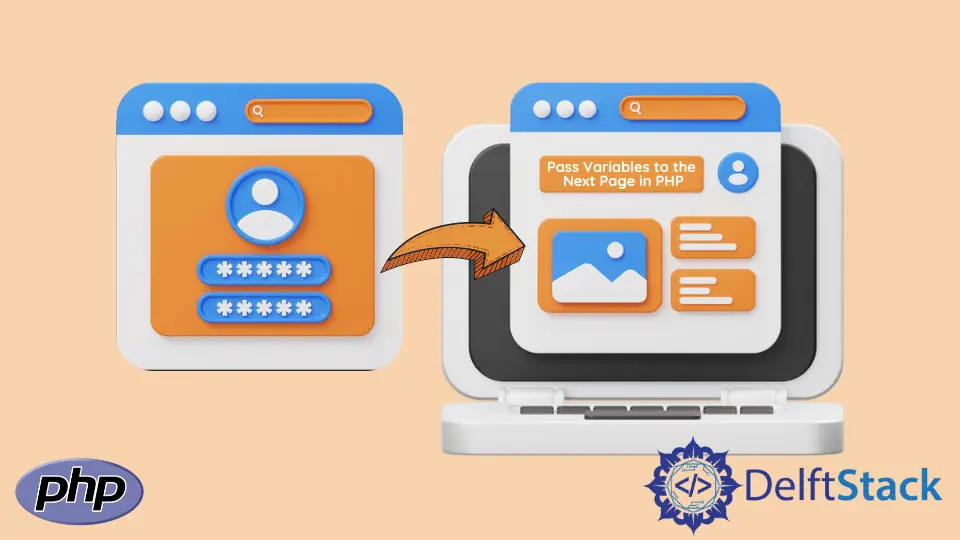PHP 中如何将变量传递到下一页

PHP 变量是等于某一值的符号或名称。它用于存储值,例如值,数字,字符或内存地址,以便可以在程序的任何部分中使用它们。一个简单的变量可以在程序的任何部分中使用,但是在它的外部无法访问,除非它通过 HTML 形式的 GET 和 POST,session 或 cookie 来传递它。
通过 HTML 表单使用 GET 和 POST 来传递 PHP 变量
HTML 表单是 PHP 最强大的功能之一。任何表单元素将自动可用于表单的 action 目标。
POST 请求
<form action="nextPage.php" method="POST">
<input type="text" name="email">
<input type="text" name="username">
<input type="submit" name="submit">
</form>
获取数据到 nextPage.php
$username = isset($_POST['username']) ? $_POST['username'] : "";
$email = isset($_POST['email']) ? $_POST['email'] : "";
echo "Username: ".$username;
echo "Email: ".$email;
脚本的示例输出:
Username: johndoe
Email: johndoe@gmail.com
上面的示例显示了如何通过 HTML 表单使用 POST 传递变量。表单元素需要具有 action 和 method 属性。action 包含下一页,在本例中为 nextPage.php。方法可以是 POST 或 GET。然后,你可以使用 $_POST 或 $_GET 访问 nextPage.php 中的元素。
GET 请求
<?php
$phpVariable = "Dog";
?>
<a href="nextPage.php?data=<?=$phpVariable?>">Bring me to nextPage</a>
这个例子将创建一个 GET 变量,可以在 nextPage.php 中访问。
例子:
echo $phpVariable = $_GET['phpVariable'];
//output: Dog
可以使用 $_GET 访问 GET。
另一种方法是在 HTML 表单中添加一个隐藏元素,该元素会提交到下一页。
例子:
<form action="nextPage.php" method="POST">
<input type="hidden" name="phpVariable" value="Dog">
<input type="submit" name="submit">
</form>
nextPage.php
//Using POST
$phpVariable = $_POST['phpVariable'];
//Using GET
$phpVariable = $_GET['phpVariable'];
//Using GET, POST or COOKIE;
$phpVariable = $_REQUEST['phpVariable'];
你可以将方法从 POST 更改为 GET,以使用 GET 请求。POST 和 GET 对于自动流量来说是不安全的,而且 GET 可以通过前端使用,因此更容易被黑客入侵。
$_REQUEST 可以接受 GET,POST 或 COOKIE。最好在自引用形式上使用 $_REQUEST 来进行验证。
使用 session 和 cookie 来传递 PHP 变量
session 和 cookie 更易于使用,但 session 比 cookie 更为安全,虽然它并不是完全安全。
session:
//page 1
$phpVariable = "Dog";
$_SESSION['animal'] = $phpVariable;
//page 2
$value = $_SESSION['animal'];
session 时,要记住在访问 $_SESSION 数组之前在两个页面上都添加 session_start()。cookie
//page 1
$phpVariable = "Dog";
$_COOKIE['animal'] = $phpVariable;
//page 2
$value = $_COOKIE['animal'];
cookie 和 session 之间最明显的区别是,session 将存储在服务器端,而 cookie 将客户端作为存储端。